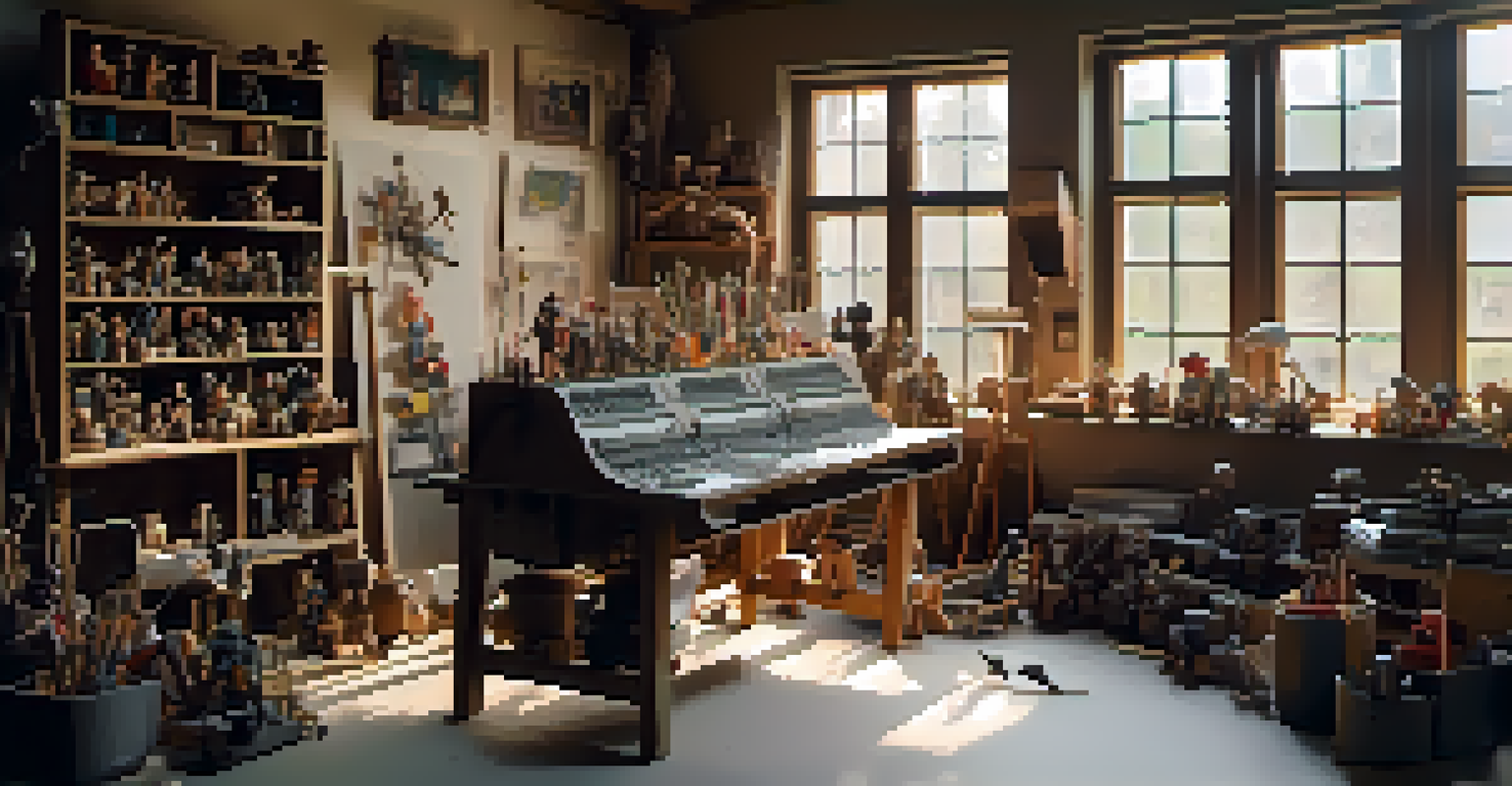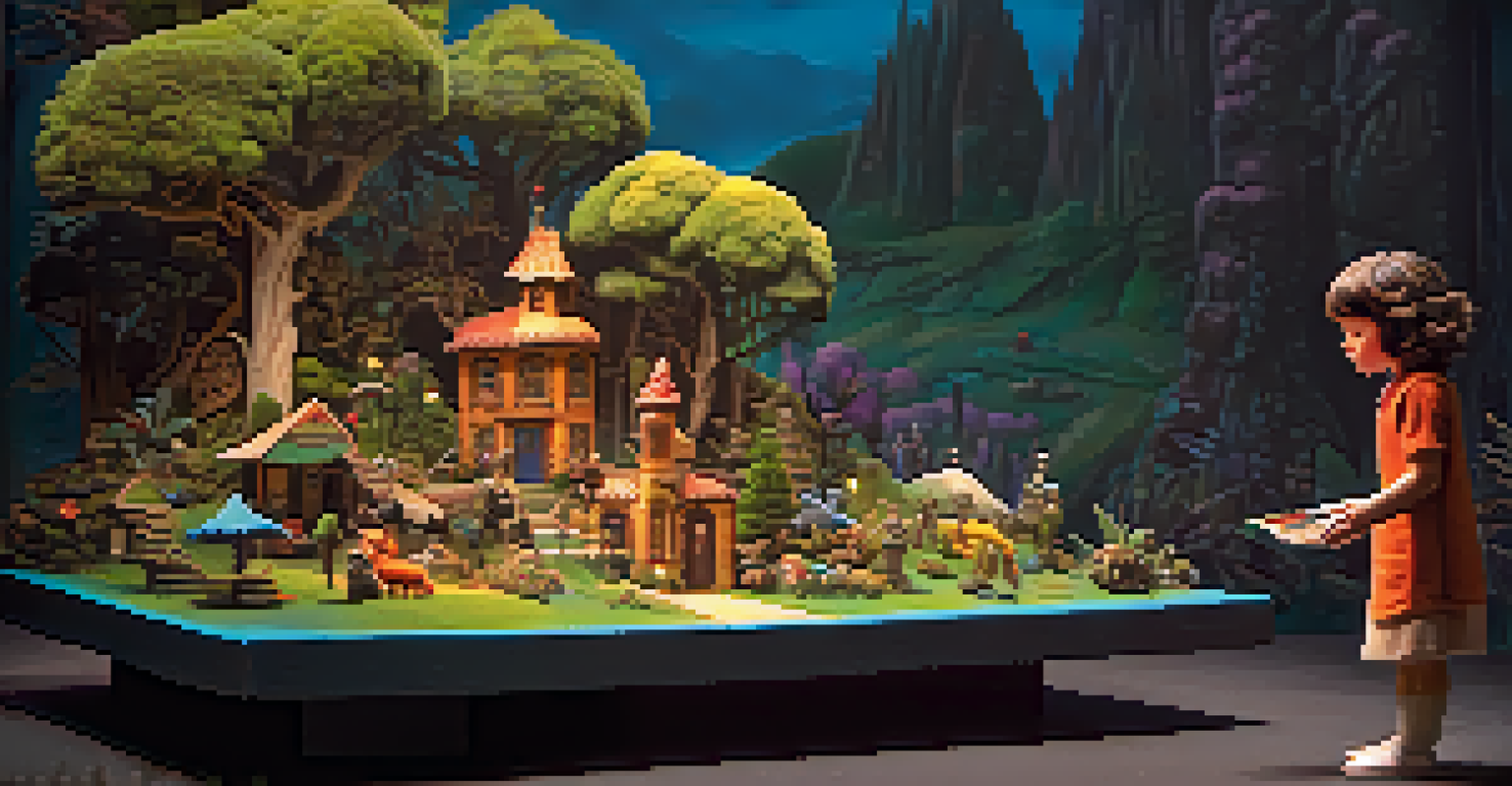Stop Motion Animation: Techniques from Early to Modern Day

The Origins of Stop Motion Animation
Stop motion animation traces its roots back to the late 19th century, with pioneers like J. Stuart Blackton and George Méliès experimenting with frame-by-frame techniques. These early films showcased the magic of creating movement from still images, captivating audiences with their novelty. For instance, Blackton's 'The Haunted Hotel' used clever tricks to produce humorous effects that laid the groundwork for future animators.
Animation is not the art of drawings that move but the art of movements that are drawn.
As technology progressed, filmmakers began to refine their methods. The use of puppets, clay, and even everyday objects allowed for more creativity and storytelling. An example is Méliès's 'A Trip to the Moon,' which combined live action with stop motion to create fantastical visuals that inspired generations of animators.
These early experiments set the stage for the development of more sophisticated techniques in the coming decades, proving that imagination could bring inanimate objects to life.
The Golden Age of Stop Motion: 1930s to 1950s
The 1930s to 1950s marked the Golden Age of stop motion animation, with studios like Ray Harryhausen's and Willis O'Brien's leading the charge. This period saw the creation of iconic films such as 'King Kong' (1933) and 'The 7th Voyage of Sinbad' (1958), which showcased groundbreaking effects. Harryhausen's unique style, often called 'Dynamation,' brought intricate detail and fluidity to his characters, setting a high bar for animators.

One standout example is the fight scene in 'King Kong,' where O'Brien's work demonstrated how stop motion could create tension and excitement. The meticulous attention to detail in animating Kong made audiences believe they were witnessing a real creature.
Stop Motion's Rich History
Stop motion animation has evolved from its 19th-century origins, showcasing creativity and innovation through various techniques and technologies.
This era not only solidified the importance of stop motion in film but also inspired a new generation of animators who would take the art form in innovative directions.
The Rise of Claymation in the 1960s and 1970s
The 1960s and 1970s ushered in the era of Claymation, a technique that involves manipulating malleable figures made of clay. One of the most notable productions of this time was 'Gumby,' created by Art Clokey, which showcased the versatility of clay figures in storytelling. The charm of Claymation resonated with audiences, proving that stop motion could be both whimsical and engaging.
The magic of stop motion is in how it brings the inanimate to life, creating a unique connection between the viewer and the characters.
Another landmark film during this period was 'The Nightmare Before Christmas' (1993), although it was released later, its roots lay in the earlier techniques pioneered in the 70s. Tim Burton's distinctive style combined with the intricate craftsmanship of animators like Henry Selick brought a new level of artistry to stop motion.
The rise of Claymation not only expanded the visual vocabulary of stop motion but also emphasized the personal touch that animators could bring to their work.
Technological Innovations in the 1980s and 1990s
With the advent of computer technology in the 1980s and 1990s, stop motion animation began to evolve rapidly. While traditional techniques remained popular, digital tools provided animators with new opportunities for precision and creativity. Films like 'The Nightmare Before Christmas' and 'James and the Giant Peach' utilized both stop motion and CGI to create stunning visuals that pushed the boundaries of the medium.
This blending of techniques highlighted how technology could enhance the artistry of stop motion rather than replace it. For example, the seamless integration of computer-generated backgrounds allowed animators to focus on character movements without compromising the visual quality.
Technological Evolution Enhances Art
The integration of digital tools in the 1980s and 1990s modernized stop motion, allowing for greater precision and creativity while preserving traditional artistry.
These innovations not only modernized stop motion but also opened the door for a new generation of filmmakers to explore hybrid styles and further develop the craft.
The Renaissance of Stop Motion: 2000s to Present
The 2000s marked a renaissance for stop motion animation, with a resurgence in popularity thanks to films like 'Coraline' (2009) and 'Kubo and the Two Strings' (2016). These films combined traditional techniques with cutting-edge technology, showcasing the endless possibilities of stop motion. 'Coraline,' in particular, captivated audiences with its dark, whimsical story and stunning visual aesthetics.
Directors like Henry Selick and Laika Studios have pushed the envelope, demonstrating that stop motion can tackle complex narratives while still delivering breathtaking visuals. The meticulous work involved in animating each frame has become a hallmark of quality in the industry.
This modern wave of stop motion continues to inspire new animators to explore the medium, proving that the art form is as relevant today as it was in its early days.
The Role of Storytelling in Stop Motion Animation
At its core, stop motion animation is about storytelling. Whether it's a whimsical tale of adventure or a heartfelt drama, the ability to convey emotion through inanimate objects is what captivates audiences. The tactile nature of stop motion allows for a unique connection between the viewer and the characters, making the story more engaging.
For example, in films like 'The Little Prince' (2015), the combination of stop motion and rich narratives creates a profound experience that resonates with viewers of all ages. The characters, crafted with care, evoke genuine emotions that enhance the storytelling.
A Bright Future Ahead
With advancements in technology and a renewed interest in handcrafted art, the future of stop motion animation promises innovative storytelling experiences.
This emphasis on narrative depth is what sets stop motion apart from other animation styles, reminding us that even the simplest figures can tell complex stories.
The Future of Stop Motion Animation
As we look to the future, the potential for stop motion animation appears brighter than ever. With advancements in technology and a growing appreciation for handcrafted art, more filmmakers are embracing this timeless technique. The rise of platforms like Netflix has also opened doors for unique stop motion projects that were previously challenging to finance.
Additionally, the blending of traditional stop motion with virtual reality and augmented reality experiences is on the horizon. This fusion of techniques could create immersive storytelling experiences that redefine how we engage with animated content.

Ultimately, the future of stop motion animation holds limitless possibilities, ensuring that this beloved art form will continue to evolve while retaining its unique charm.